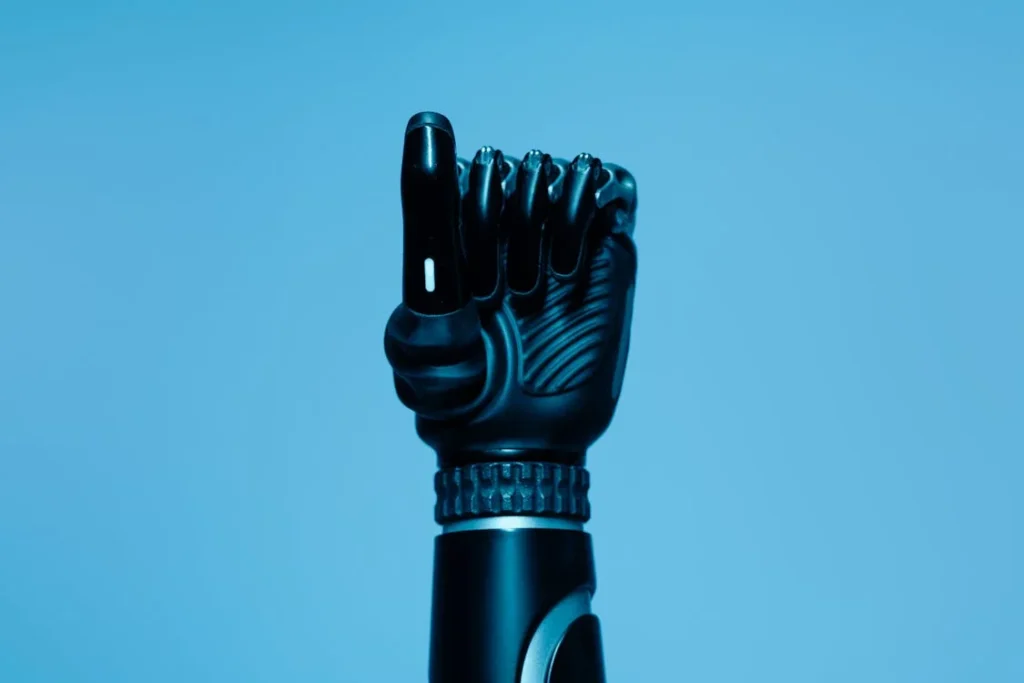Physical therapy is necessary—but let’s face it, for many people, it can feel like a chore. After surgery or injury, patients are told to do the same movements again and again. They know it’s important. But without energy, encouragement, or change, even the most essential therapy sessions can start to feel boring, slow, or discouraging. And when people stop showing up—either mentally or physically—their recovery slows down too.
Now, across India, that story is starting to change.
Hospitals and rehabilitation centers are turning to a new tool to help patients heal faster, with more focus and motivation: gamified recovery. This approach turns physical therapy into an interactive experience. It uses game-like tasks, challenges, and feedback to keep patients engaged—and it’s proving to be a game-changer.
At Robobionics, we’ve seen how prosthetic users light up when therapy stops feeling like a punishment and starts feeling like progress. We’re seeing hospitals across India—big and small—test gamified therapy tools in real wards, with real patients. And the early results are clear: when therapy feels fun, people work harder, recover faster, and feel stronger—not just in body, but in spirit.
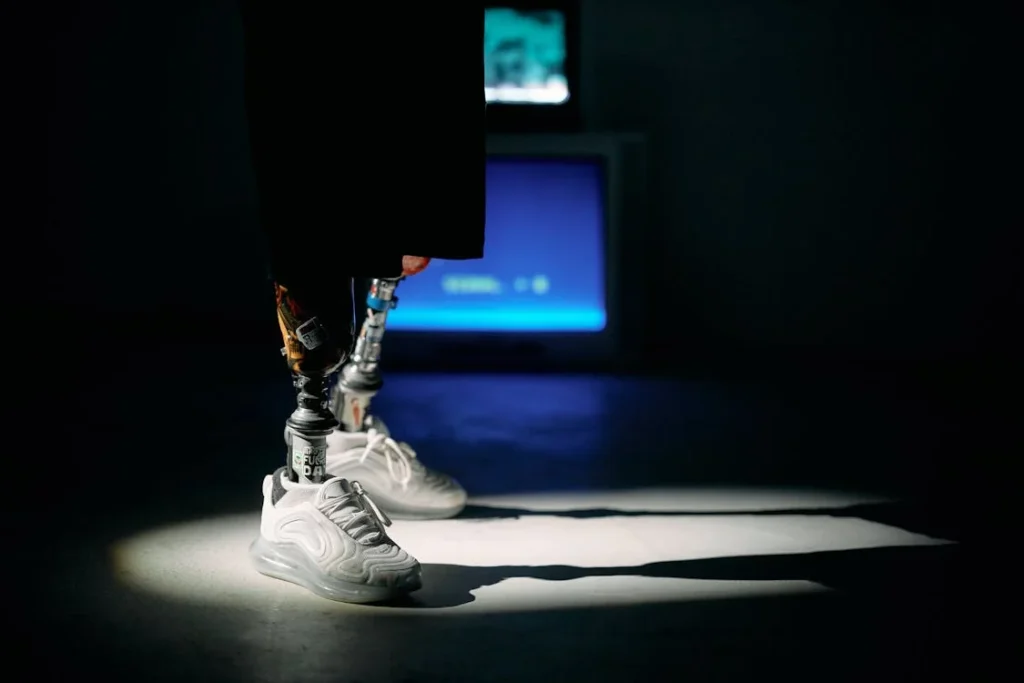
How Gamified Recovery Works in Indian Hospitals
The Shift From Repetition to Real-Time Engagement
Traditional physical therapy often involves structured repetition. Patients are asked to move a limb a certain number of times, hold a pose, or complete sets of walking drills. These activities are necessary—they build strength, restore mobility, and rebuild function. But for many patients, especially those staying in hospitals or recovering from major surgery, these sessions can start to feel routine and mentally tiring.
Gamified recovery transforms that experience.
Instead of being asked to lift an arm ten times, the patient might play a game where each lift moves a balloon on a screen. Instead of slowly bending a knee, they might match on-screen movements with their own in a dancing challenge or rhythm task. These aren’t video games in the typical sense. They are carefully designed digital rehab programs that blend fun visuals with medical-grade movement tracking. Each action is still therapeutic—but the patient sees it as part of a goal, a challenge, or even a story.
This creates a shift in attention. The patient stops counting the seconds. They stop focusing on the pain. Instead, they start focusing on performance, improvement, and feedback. Their brain becomes more involved. They smile more. They focus more. And most importantly, they stay engaged longer.
Blending Medical Goals With Game Design Principles
Gamified rehab doesn’t happen by accident. It works because it blends two powerful systems: rehabilitation science and behavioral psychology. In many Indian hospitals, physiotherapists are now working with software developers and rehab tech companies to design therapy experiences that serve clinical goals but feel far from clinical.
Take a patient recovering from a stroke. The traditional goal might be to regain fine motor control in the hands. A therapist might normally ask them to squeeze a stress ball or pick up small objects. In a gamified setting, the same patient may be asked to play a color-matching game where each match requires a precise pinch or grip. The game rewards accuracy with a score or a small reward on screen. The patient gets immediate feedback. And they enjoy the process more, because their effort is visualized—and rewarded.
This matters because the human brain is wired to respond to reward and purpose. When each movement leads to a win, the brain pays closer attention. It builds better memory. And because it feels like play, patients are more likely to keep practicing—even when the session is hard.
Indian hospitals are learning quickly that when therapy feels purposeful and interactive, patients are not just more willing—they’re more capable.
Why Hospitals Are Turning to Gamified Rehab Now
The timing couldn’t be better. With rising demand for inpatient and outpatient rehab across India—especially after surgeries like joint replacements, amputations, and stroke—hospitals are looking for ways to improve recovery outcomes without stretching staff thin. Gamified therapy offers a solution that scales.
Once a digital rehab system is set up, a single therapist can oversee multiple patients at once. Each person works at their own pace, guided by the game and tracked by the software. Some hospitals are even creating “recovery rooms” equipped with screens, motion sensors, and virtual tasks—allowing patients to go through their sessions independently, while therapists monitor from a nearby desk.
This saves time. It frees up attention for patients who need one-on-one care. And it ensures that no one is left waiting for their turn. Most importantly, it gives patients more control. They don’t just follow orders—they interact, experiment, and learn.
For hospitals in cities like Mumbai, Pune, Delhi, and Bengaluru, this technology is part of a larger push toward digital health innovation. But even in smaller hospitals and rural clinics, gamified rehab is gaining interest—because it’s affordable, adaptable, and easy to understand. Patients of all ages, including the elderly, are responding positively to systems that make them feel involved and encouraged.
Real Stories From the Recovery Floor
In one Mumbai hospital, a 62-year-old man recovering from knee surgery spent weeks dreading his rehab sessions. The pain, the effort, the long stretches of repetition—it drained him. But after the hospital introduced a rehab game that had him “kick a ball” on a screen using real leg movements, everything changed. “It didn’t feel like therapy anymore,” he said. “I actually looked forward to it.”
In Delhi, a teenage girl learning to walk again with a below-knee prosthetic found herself racing a virtual opponent through a park-like game interface. Each step she took in real life was mirrored on screen. She wasn’t just walking—she was competing. And that sense of competition pushed her further than she thought she could go.
Therapists in these hospitals report not just faster physical results—but better moods, more laughter, and higher attendance. Patients who once skipped sessions began requesting extra time in the gamified therapy rooms. For them, rehab was no longer a punishment. It became progress.
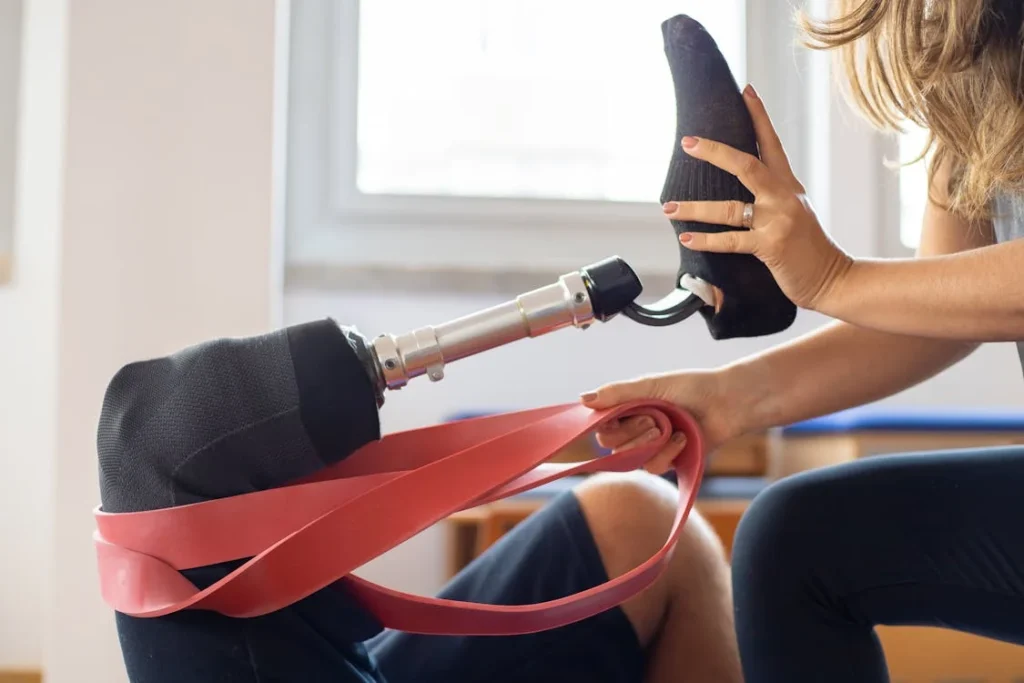
How Indian Culture Shapes the Gamified Therapy Experience
The Role of Family Support in Patient Recovery
In India, healing is rarely a solo process. Most patients go through recovery with family by their side—spouses, parents, siblings, or even neighbors. This family presence is deeply woven into Indian hospital culture. Loved ones sit outside recovery rooms.
They bring food, offer encouragement, and often become informal caregivers. While this level of involvement can be emotionally supportive, it can sometimes also add pressure. Patients may feel nervous performing exercises under the watchful eyes of others, or worry about being a burden if they’re not progressing fast enough.
Gamified therapy, interestingly, offers a solution to both the pressure and the support. The playful nature of the experience helps patients loosen up. It removes the formality of traditional therapy and replaces it with something more casual and inviting.
Family members watching from the sidelines don’t just sit passively—they cheer. They clap when the score goes up. They laugh when a movement goes wrong. That energy fills the room.
In fact, some gamified systems used in Indian hospitals are now designed to include co-play options, where a family member can join a simple on-screen challenge. This creates a shared moment, turning therapy into a bonding experience instead of a solo chore. Whether it’s a father recovering from stroke or a mother adjusting to a new prosthetic, that feeling of not being alone makes a huge difference.
Making Therapy More Accessible Across Language and Literacy Levels
Another reason gamified therapy is gaining traction in Indian hospitals is because of its simplicity. Traditional rehab often relies on verbal instructions or paper guides. For patients who are not comfortable reading English, or who may not be fully literate, these sessions can feel intimidating or unclear.
But gamified rehab doesn’t rely on long explanations. It relies on experience. The game shows a movement, the patient copies it. A green light means “you did it right.” A gentle sound means “try again.” Progress is shown in colors, shapes, and movement—not medical jargon. That visual design makes therapy feel universal. It speaks in a language everyone understands—action.
Many hospitals in India, especially in diverse states like Maharashtra, Tamil Nadu, or West Bengal, are finding that this design works across age groups, backgrounds, and education levels. Whether someone speaks Hindi, Marathi, Bengali, or Telugu, the experience is the same: welcoming, clear, and empowering.
This matters because a large portion of India’s population still struggles to access rehabilitation support due to language or literacy barriers. Gamified rehab bridges that gap—quietly, effectively, and respectfully.
Respecting Pace and Privacy in a Group-Based Culture
In Indian hospitals, therapy spaces are often shared. A ward might have three to five patients doing rehab at the same time. For some, this setup is encouraging. They see others trying, and it gives them motivation. But for others—especially older patients or those still adjusting to their prosthetic—it can feel like too much. They may hesitate to move fully. They might fear judgment or comparison.
Gamified rehab systems bring a new dynamic into these spaces. Even when patients are side-by-side, the focus shifts from other people to the screen. Each person has their own progress bar, their own game, their own task. This creates a zone of privacy—even in public. The interface gives them something to look at besides each other. That psychological redirection gives them confidence to move freely, without feeling watched.
And because these games adapt to the user’s pace, there’s no sense of “falling behind.” One patient might be performing fast-paced balance drills, while another is doing slow arm raises. But the game makes each task feel important. Each person is winning in their own way.
This personalization is what traditional group therapy often misses—and it’s why gamified platforms feel so refreshing in the Indian hospital context. They meet people where they are, not where someone else is.
Reinforcing India’s Strength in Digital Adoption
India has one of the youngest, most tech-savvy populations in the world. Even older adults are rapidly learning to use smartphones and digital tools. This creates a perfect environment for gamified therapy to thrive.
Hospitals in cities like Hyderabad, Ahmedabad, and Kochi are reporting that patients are not only adapting to digital rehab quickly—they’re asking for it. Patients who’ve used digital fitness apps or played games with their grandchildren immediately recognize the format. Younger patients, in particular, engage quickly. They treat therapy like a challenge, like a level to unlock.
This familiarity accelerates learning and reduces resistance. What once required a long explanation is now picked up in a matter of minutes. The technology feels friendly, not foreign. And that acceptance leads to faster integration, higher use, and better outcomes.
Gamified recovery, in many ways, is perfectly suited for the Indian mindset: family-oriented, community-driven, emotionally expressive, and digitally curious.
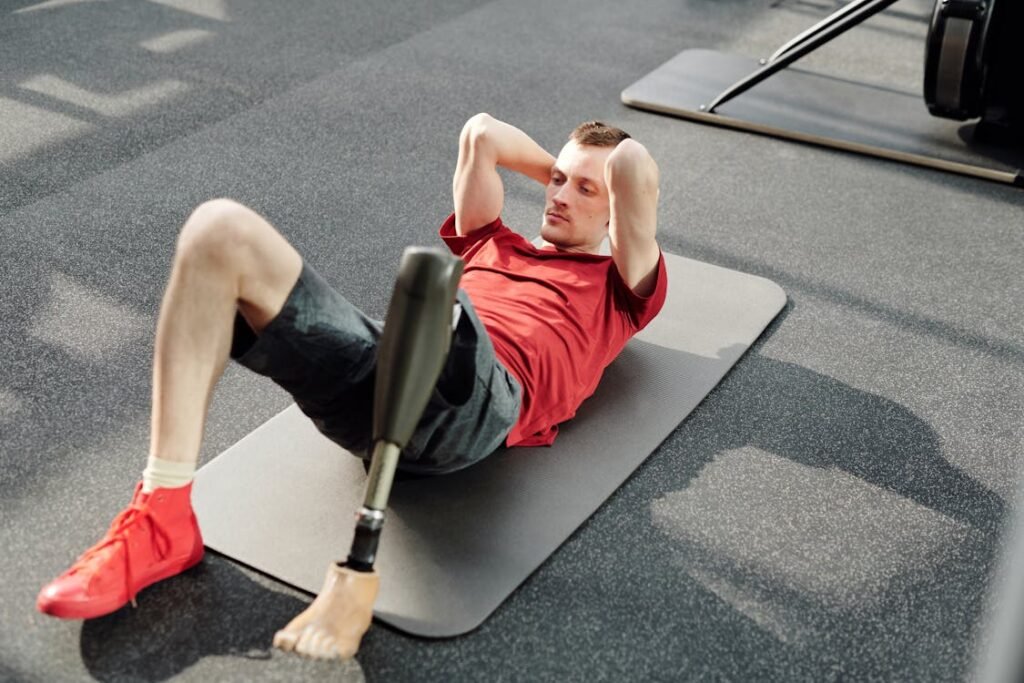
Challenges and Opportunities: What Indian Hospitals Are Learning from Gamified Recovery
Training Staff to Embrace a New Kind of Care
While patients often take to gamified therapy with excitement, the transition isn’t always instant for hospital staff. For decades, physiotherapy has followed a structured, hands-on approach. Therapists use observation, touch, and manual correction to guide patients through recovery. Introducing screens, sensors, and virtual systems into that flow can feel unfamiliar—at first.
Some therapists worry the technology will reduce personal interaction. Others fear it might be too complicated or take attention away from what matters most: the patient. But what Indian hospitals are discovering is the opposite. When therapists are properly trained, gamified tools actually make their work easier and more impactful.
Instead of spending time counting reps or manually adjusting every motion, therapists can focus on posture, patient comfort, and motivation. They can step back, observe, and intervene only when needed. Some hospitals have begun organizing “digital therapy orientation days” where physiotherapists test the tools themselves—playing the games, adjusting the sensors, and experiencing firsthand how the system responds. These sessions build trust, not just in the tech, but in the process.
As therapists become more confident, they find new ways to blend their expertise with the technology—offering personalized support while the system handles routine tracking. The result? Patients get more focused, more present care.
Keeping the Experience Culturally Sensitive and Inclusive
Another learning curve for Indian hospitals lies in content design. Not all gamified rehab programs are made with Indian users in mind. Some platforms, originally developed overseas, feature themes, visuals, or music that feel disconnected from the local context. This may not affect the movement itself—but it does impact how users relate to the experience.
That’s why several hospitals—and companies like Robobionics—are working to localize gamified rehab. We’re developing culturally familiar themes, sounds, and environments. A rehab game that shows a bustling Indian street, a cricket field, or a temple courtyard isn’t just decoration—it builds emotional connection. It reminds the user: this is made for you. That sense of familiarity improves trust and reduces hesitation.
Hospitals are also exploring ways to offer therapy in regional languages, using voice-guided instructions or captions in Hindi, Tamil, Kannada, Bengali, and more. This small shift in language makes a big impact—especially for older patients or those who’ve never been around technology.
In this way, gamified recovery becomes not just accessible, but relatable. It reflects India’s diversity, not just in speech and style, but in values.
Balancing Screen Time with Human Touch
A major concern among both clinicians and caregivers is whether screens will replace human connection. In some ways, gamified rehab looks like entertainment—it runs on tablets, uses visuals and sound, and doesn’t always need a therapist in the room. But hospitals are learning that gamification doesn’t replace human care—it enhances it.
In fact, many patients open up more emotionally during a session where they’re relaxed and engaged. When the therapy experience feels lighthearted and goal-oriented, users are more likely to talk about their pain, their fears, or their struggles. Therapists can then step in—not just to correct movement, but to offer reassurance and emotional support.
Some Indian hospitals are also experimenting with hybrid sessions—part gamified, part therapist-led. The digital system handles the warm-up, and then the therapist transitions the patient into more targeted, hands-on movements. This balance helps maintain human connection while still enjoying the benefits of automation and tracking.
Gamified rehab doesn’t take away care—it gives therapists more space to care.
Turning Patients Into Advocates
One unexpected benefit hospitals are reporting is that patients who go through gamified therapy often become its strongest champions. They tell others in the ward. They convince skeptical friends. They show off their scores or movements to visitors. This word-of-mouth effect has created a ripple across hospital floors, especially in rehab wards and post-operative care units.
It’s not hard to see why. When recovery feels fun, when it feels yours, you naturally want to talk about it. You feel less like a patient and more like an active participant in your own healing. For hospitals trying to boost therapy adherence or reduce patient dropout, this peer advocacy is priceless.
At Robobionics, we believe the best form of marketing is a recovering patient who says, “I didn’t think I could do it—but I did.”
Indian hospitals are realizing that gamified therapy doesn’t just change the method of rehab—it changes the mindset around rehab. It turns something people resist into something they embrace.
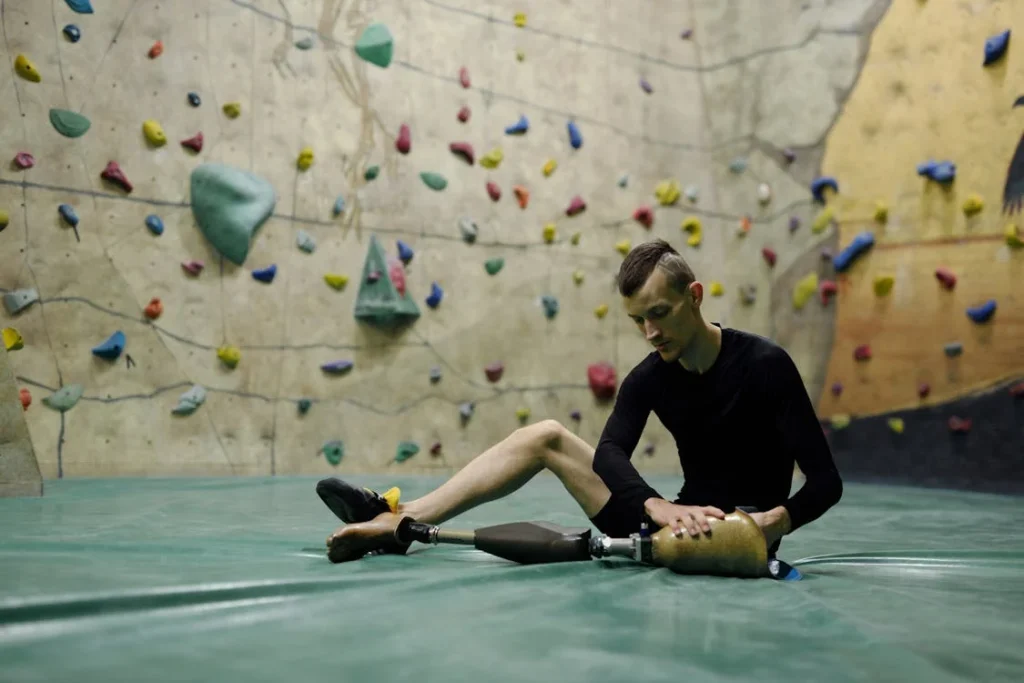
How Gamified Rehab Is Transforming Recovery for Children in Indian Hospitals
Turning Scary Into Safe: Making Therapy Child-Friendly
For children, hospitals can be intimidating. White coats, needles, machines, and unfamiliar surroundings often create fear, especially for those recovering from surgery, burns, limb trauma, or neurological conditions like cerebral palsy. When it comes to physical therapy, many young patients resist. They cry, hide, or shut down. And even when they do participate, it’s usually passive and cautious.
That’s where gamified rehab makes a remarkable difference. By using play as the core mechanism, therapy stops feeling like something clinical and starts feeling like something they want to do. It doesn’t just entertain—it empowers. Suddenly, instead of being told “do this stretch,” they’re told “help the bunny jump over the river,” or “use your hand to build the tower on screen.”
The result is a complete emotional shift. Their guard goes down. Their curiosity takes over. And therapy becomes something joyful—not something to fear.
In Indian pediatric wards, therapists are seeing higher cooperation and longer engagement simply because the game reframes the task. A child who would only tolerate five minutes of stretching may now spend fifteen minutes reaching, balancing, and moving—because it’s no longer “exercise.” It’s a game.
Helping Children with Limb Differences Develop Early Control
Children born with limb differences or those who undergo early amputation often struggle with self-image and body coordination. Learning to use a prosthetic at a young age is essential—but it also has to be encouraging. If the experience feels too hard or too strange, children may avoid using their device altogether, leading to delays in independence and growth.
Gamified rehab introduces prosthetic control in a way that feels natural and inviting. When a child uses their bionic hand to “catch” fireflies on screen or “drive” a race car, they’re not thinking about how difficult the movement is—they’re simply playing. But in that play, their brain is learning. Their muscles are learning. They are developing proprioception, reaction time, and fine motor skills—all through joyful motion.
At Robobionics, we’ve seen children respond to gamified prosthetic training with enthusiasm that traditional drills never created. The screen becomes a mirror for success. They see themselves doing something cool. And that pride—“look what I can do”—is what builds long-term usage and confidence.
Indian hospitals that serve pediatric amputees and orthotic patients are beginning to add game-based tools as part of early intervention therapy, especially in cities like Pune, Bengaluru, and Chennai. And the results speak for themselves.
Creating a Routine Children Look Forward To
For any rehab to succeed, it needs to happen regularly. But getting a child to stick to a therapy schedule is hard—especially when they’re in pain, restless, or simply bored. Most young patients lose focus within minutes if the session doesn’t feel rewarding or interactive.
Gamified rehab builds routine by adding excitement to repetition. Each session has a clear start, clear tasks, and a clear “win.” This structure gives children a sense of purpose. They’re not just moving—they’re playing to achieve. They remember their scores. They want to do better next time. They often ask, “When can I play again?”
In Indian hospitals where pediatric rehab units have been equipped with digital therapy systems, therapists report that children start viewing therapy time like screen time. Parents also find it easier to bring their child to sessions when they know it won’t be a battle. And when children look forward to therapy, the consistency leads to faster physical recovery and better emotional outcomes.
For children with conditions like spina bifida, developmental delays, or post-fracture stiffness, this kind of repetition is critical—and gamification makes it stick.
Building Emotional Resilience Through Playful Success
Children who are going through physical challenges often struggle with emotions they don’t know how to express. They may feel different from their peers. They may experience frustration, shame, or fear they can’t articulate. When therapy feels hard, it reinforces the belief that something is “wrong” with them.
But gamified therapy changes that narrative. It lets them win.
Each completed game, each new score, each positive reaction from the screen gives them a sense of accomplishment. It says: You’re doing great. That kind of feedback isn’t just helpful—it’s healing. It builds emotional resilience. Children begin to see their abilities, not just their limitations.
Many Indian pediatric therapists now use gamified tools as part of holistic treatment—not just for motion, but for motivation. The tools become confidence-builders, attention-trainers, and even mood elevators.
Some hospitals are even exploring partnerships with schools to extend gamified therapy into education settings for children who’ve experienced trauma or long hospital stays.
Supporting Parents as Partners in Therapy
Finally, one of the most impactful things gamified rehab does in pediatric care is this: it gives parents a way to participate, not just observe.
In many Indian hospitals, parents sit outside therapy rooms, waiting and worrying. They want to help but don’t always know how. With gamified tools, they can watch, clap, cheer, or even join. The therapy session becomes a family moment—a place where progress is celebrated together.
That visibility builds understanding. Parents begin to see what works, what their child is learning, and how they’re improving. It creates a bridge between the hospital and home, where parents can reinforce those same movements and habits in daily life.
And when parents feel involved—not helpless—children feel more secure. More willing to try. More ready to heal.

Post-Operative Orthopedic Care Gets Smarter With Gamified Recovery
Bridging the Gap Between Surgery and Movement
In the orthopedic wards of Indian hospitals, one challenge remains constant: getting patients moving again quickly and safely after surgery. Whether it’s a knee replacement, hip fracture, or spinal fusion, early movement is critical. It prevents complications like blood clots, joint stiffness, and muscle atrophy. But it’s also where patients often hesitate the most.
Pain, fear of reinjury, and a lack of motivation slow down the recovery timeline. Patients are told, “You must walk,” or “You need to start bending that joint”—but when the pain is still fresh and the surgery feels recent, those instructions often go ignored or delayed.
This is where gamified recovery is starting to play a powerful role in orthopedic care across India. Instead of framing post-op movement as a medical command, hospitals are reframing it as an interactive, rewarding experience. Patients don’t just “walk.” They walk to collect virtual coins. They don’t just “flex their knee.” They do it to move a cartoon animal up a staircase. These small tweaks change everything.
Suddenly, fear is replaced with curiosity. Hesitation becomes exploration. And progress feels personal.
Making Day One Movement Less Intimidating
The first few days after orthopedic surgery are often the hardest. Patients are groggy, in pain, and overwhelmed by the idea of moving again. Therapists know how important these early sessions are—but patients often resist. They’re afraid to move the joint. They doubt their strength. They want more time.
Gamified therapy makes that first movement feel smaller, safer, and more achievable.
Imagine this: a patient who’s just had a hip replacement is asked to lift their leg slightly while lying in bed. But instead of staring at the ceiling, they’re looking at a screen where their movement helps build a digital bridge. With each lift, a plank is added. In five minutes, they’ve not only performed ten reps—they’ve completed a challenge. They’ve built something.
This kind of early engagement reduces stress and distraction. It helps patients reconnect with their body—gently and gradually. In hospitals from Pune to Coimbatore, orthopedic surgeons are beginning to work with physio teams to integrate game-based movement trackers into ward-based recovery. They’re finding that even hesitant patients become more willing when the movement leads to visible success.
Improving Range of Motion After Joint Replacement
One of the key goals after a knee or hip replacement is restoring range of motion. Patients must bend, straighten, and rotate the joint daily—often through discomfort. But because progress happens in small increments, it’s hard for patients to see improvement. That lack of visible change leads many to give up too soon.
Gamified therapy changes the experience by tracking every degree of improvement—and turning it into a result. If a patient increases their knee bend by just five degrees compared to yesterday, the game rewards them. A new level is unlocked. A progress chart updates. A soft “congratulations” sound plays.
These small, almost invisible milestones suddenly become visible. And when patients can see their success, they believe in their ability to keep going.
At Robobionics, we’ve supported hospitals using smart rehab tools for post-TKA (Total Knee Arthroplasty) patients. The results? Not just better joint mobility—but happier patients. Patients who return to therapy with questions like, “Can I beat yesterday’s score?” That kind of mindset makes long-term recovery more sustainable.
Reducing Length of Hospital Stay Without Rushing Recovery
Hospitals everywhere—including in India—are under pressure to discharge patients as soon as it’s safe. Beds are limited. Costs add up. And prolonged stays carry risks of infection or decline in mental health. But early discharge only works if patients are recovering well—and continuing their rehab reliably at home.
Gamified recovery supports this by providing a bridge between in-hospital care and at-home rehabilitation.
Before discharge, patients learn to use the digital platform in the hospital itself. They become comfortable with the interface, understand how to complete sessions, and get familiar with how the software tracks their movement. Then, when they go home, they take that system with them—on a tablet or smartphone. The therapy continues seamlessly.
Doctors and therapists can monitor performance remotely. They can check if the patient is doing their sessions, track pain reports, and offer quick adjustments through the app. If something looks off—if movement declines or usage drops—someone can reach out.
This system ensures that recovery continues even after the hospital stay ends. It reduces the need for constant in-person follow-up, without sacrificing care quality.
Supporting Better Pain Management Through Distraction
Pain is real—and it’s often the biggest reason post-op patients avoid rehab. Even when it’s safe to move, the memory of surgical pain makes people reluctant. Gamified therapy offers a powerful advantage here: distraction.
When patients are focused on a task—navigating a maze, matching colors, completing a pattern—their mind is less focused on the discomfort. They’re more engaged in the challenge than in the pain. That doesn’t eliminate the physical sensation, but it lowers how much attention the brain gives to it. And that makes movement more doable.
Several Indian hospitals now use game-based rehab not just for movement—but as a built-in pain management strategy, especially in the first week post-op.
The result? Fewer skipped sessions. Fewer complaints. And a growing number of patients saying, “I didn’t even notice how much I was doing until the session ended.”
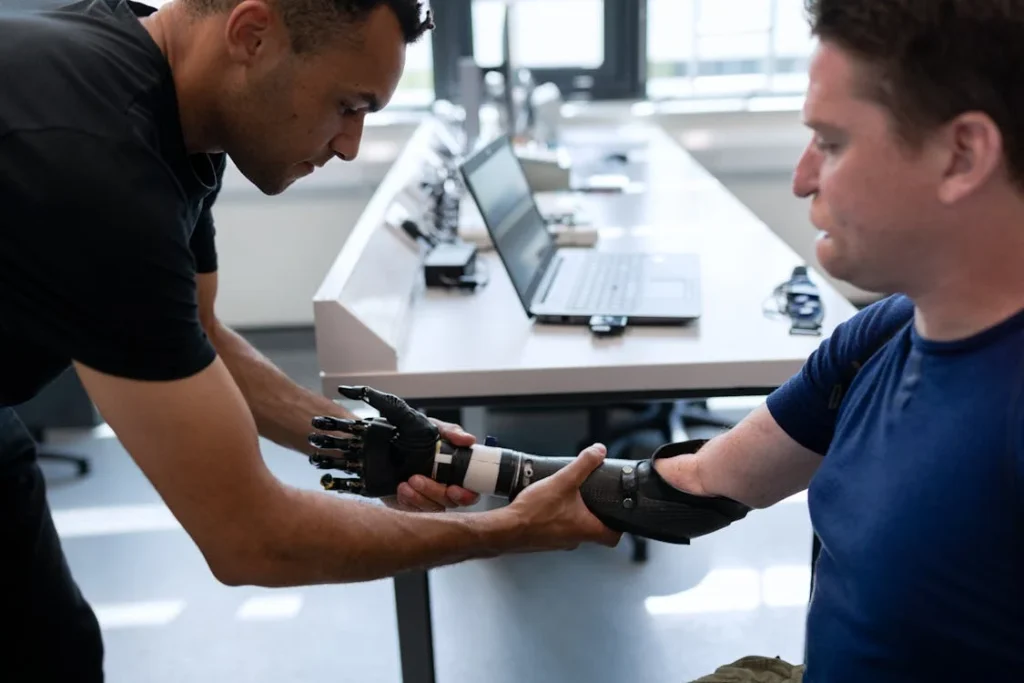
Educating Future Physiotherapists: Gamified Rehab Enters the Indian Medical Classroom
Changing How Rehab Is Taught in Physiotherapy Colleges
As gamified recovery begins making its way into Indian hospitals, a quieter transformation is happening in classrooms and labs across the country. Colleges that train physiotherapists are beginning to shift how they teach—and what they teach. Alongside anatomy charts and manual therapy skills, students are now learning about interface design, motion sensors, and game-based learning psychology.
This change isn’t just about adding new tools—it’s about rethinking the role of the therapist.
Traditionally, physios were trained to guide, correct, and manually support every movement. Now, with gamified systems providing automated tracking and feedback, students are being taught how to orchestrate therapy environments—how to combine clinical goals with digital tools, how to monitor data from a screen without losing the human touch, and how to troubleshoot systems while keeping the patient engaged.
Institutions like AIIMS Delhi, Sancheti Institute in Pune, and Sri Ramachandra University in Chennai are already introducing short courses, labs, or pilot programs focused on digital rehab tools. Some universities are even partnering with rehab-tech startups to give students hands-on exposure before graduation.
This new layer of education is producing a generation of therapists who are not only clinically skilled but also digitally fluent—and that’s exactly what India’s rapidly evolving healthcare system needs.
Building Confidence Around Technology, Not Fear
One challenge in introducing gamified therapy tools is hesitation from senior professionals who aren’t used to integrating technology into their workflow. But students—especially Gen Z learners who’ve grown up with smartphones and interactive apps—don’t carry the same hesitation.
In fact, they expect technology to be part of their toolkit.
Many physiotherapy students are excited by the idea of leading a session where the patient interacts with a screen, not just a clipboard. They see the value in being able to monitor six patients at once, rather than one. And they enjoy the creative freedom of tailoring sessions using tech-based platforms that offer real-time metrics and motivational feedback.
Colleges that offer exposure to gamified systems early in the curriculum are finding that students feel more prepared, more curious, and more confident to lead in digital rehab spaces—whether in corporate hospitals or rural clinics equipped with tablets.
This generation of learners will be the ones introducing gamified therapy in facilities that haven’t adopted it yet. They won’t wait for permission—they’ll drive change from the inside.
Teaching the Human Side of Digital Recovery
While technology plays a growing role in physical therapy, educators are also making sure that students don’t forget what makes rehab work in the first place: trust, empathy, and presence.
Gamified rehab doesn’t eliminate the therapist. It repositions them—as a guide, a coach, and a motivator.
In classrooms, students are learning how to read a patient’s emotional signals, even if the session is screen-based. They’re being taught how to step in when frustration builds, how to interpret confusion during a game, and how to adapt instructions so that patients of all ages—from children to the elderly—feel respected and understood.
In essence, future therapists are being trained not just to use systems—but to humanize them.
They’re learning how to take cold data—range of motion scores, timing charts, game accuracy—and turn it into warm conversation. “You did better than yesterday,” becomes more than a number. It becomes a connection.
That’s the future of therapy: a balance between machine precision and human empathy.
Empowering Indian Students to Innovate, Not Just Adopt
India has long been known for its engineering talent—but what happens when that talent meets physical therapy?
At institutions like NITs, IITs, and some forward-thinking physiotherapy programs, students are starting to collaborate across disciplines. Physiotherapy students are working with engineers and coders to build their own rehab games. They’re testing ideas like culturally specific interfaces, rural-accessible platforms, and gamified prosthetic training tools made for the Indian context, by Indian students.
This is more than education. It’s innovation.
By equipping physiotherapy students with the language and logic of game design, biomechanics, and patient psychology, colleges are planting the seeds for India’s next wave of affordable, inclusive, and impactful rehab tools.
At Robobionics, we believe the most powerful gamified rehab systems of tomorrow might not come from Silicon Valley—they might come from a small college in Kerala, Gujarat, or Nagaland, where one student sees a better way for a patient to smile during therapy.
Conclusion
Physical therapy is no longer just about repetition, routine, or quiet discipline in a corner of the hospital. Across India, from top-tier medical centers to small-town clinics, a new approach is taking root—one that combines clinical science with interactivity, emotion, and engagement. That approach is gamified recovery.
By turning therapy into a goal-driven, feedback-rich experience, Indian hospitals are finding new ways to motivate patients, reduce dropouts, and improve outcomes. Whether it’s an elderly stroke survivor rediscovering hand control, a teenager learning to walk again after surgery, or a young child with a prosthetic arm playing to build confidence—gamified therapy meets them where they are, and moves them forward with kindness and clarity.
What makes this movement truly powerful is its Indian spirit. The integration of family, language, culture, and local tech has made gamified rehab feel not foreign, but familiar. It’s playful, but purposeful. It’s digital, but deeply human.
At Robobionics, we see this every day. Gamified recovery isn’t just a tool—it’s a shift in mindset. It transforms passive patients into active participants. It brings lightness into heavy moments. And it proves that healing doesn’t have to be hard to be effective—it just has to feel like something worth returning to, day after day.
The future of physical therapy in India is here. And it’s joyful. It’s inclusive. It’s gamified.



